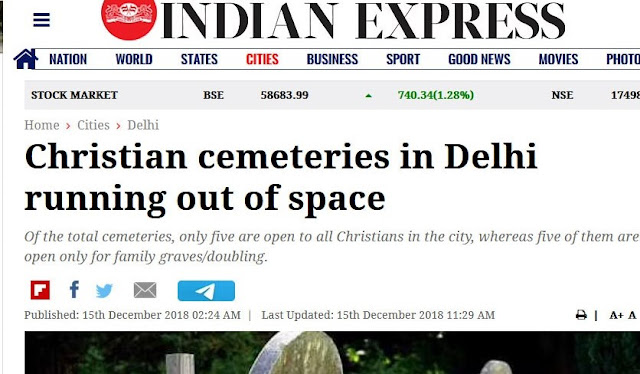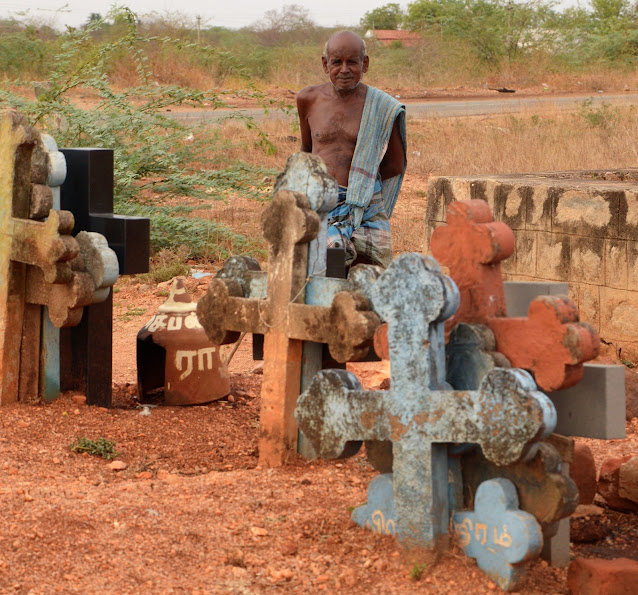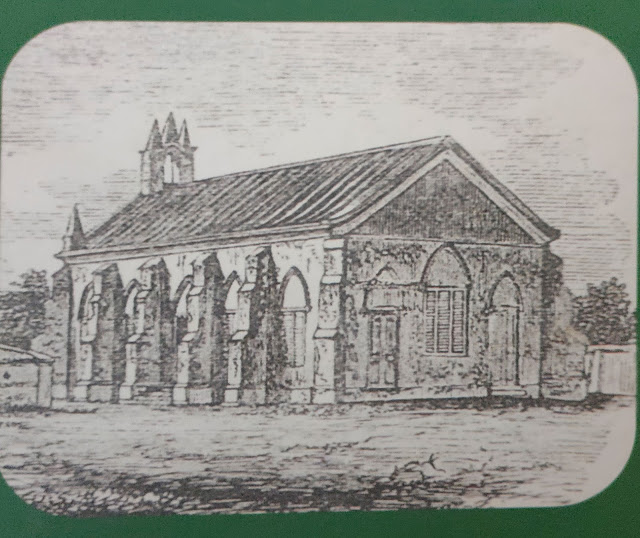NO PLACE TO RIP !!!
No Place to RIP !!!
Recently, a tragic turn of events in Chennai has turned the
spotlight on the burial practices of Christians. Yes, burials over the years have somehow
become rituals that have firmly established discrimination - Catholics,
Protestants, Caste, Status etc. In Quibble Island cemetery, Chennai, we once
wanted to know where the restroom was – the caretaker answered – for Protestants
on one side and Catholics the other !! In
the urban setting, any real-estate is of value and cemetery is not an
exception. Only the moneyed seem to afford the church-owned spaces and now
since all is full – it is possible only if a family member is already placed
inside. This situation has caused each church to come up with processes that
enable long-standing ‘subscribed’ members to have a better access to burial
spaces for many years now. Members too
feel that it is their right to claim cemetery space if they have followed the
rules of the church that is supposed to give these facilities. They do not appreciate their privileges being
taken away !!! Why didn’t Christian leaders in the last 40 years foresee
this problem?!
Christian cemeteries, with headstones of all shapes, sizes and symbolism, stand as interesting evidences of history. But now, in the 21st century digital era, it is no longer meaningful to have such elaborate resting places. I would even say it is unethical to want so much space after we are dead. Joseph Daniel had written a few days earlier pointing out to the modern options available now - cryogenic pulverization, aquamation and eco-friendly cremation. Similarly, David Manohar opines that the Concrete Vault System can be followed in Christian cemeteries across denominations - this has been accepted in Kerala our neighbouring state. The real issue is - are we ready to look at ourselves as simply ‘human remains’ at the end and that we can share our final resting places with anyone and without the need to have a headstone carrying details of our earthly life.
Here in Tamilnadu, Christian pockets here and there have shown
ingenuity in tackling this tricky business of burial. Many Christian villages
dotting the highway near Trichy have picturesque little cemeteries that do not expand
their boundaries year after year. Each
grave is just a mound of sand with more than one person buried in the
space. Above each mound one can see 4 or
5 crosses stacked lovingly against each other.
Pic: Rhoda Alex : near Mannaparai, Tamilnadu ... multiple simple graves with stacked crosses
In 2021, travelling with Nivedita across Tamilnadu, I was also able to witness
the cemeteries in many coastal fishing villages. Here again the cemetery compound remains the
same size. Memory plaques are being
fixed on the walls of the compound for the new entrants and the loved ones are
buried within the premises above earlier graves.
Pic: Rhoda Alex : Seaside village Cemetery - memory walls. Rajakamangalam thurai, Kanyakumari, Tamilnadu
Even in places like Fort Kochi and Mumbai - similar methods have been carried out for many years now. Each new burial is given only a few years time on the cemetery grounds and then memory tablets are pasted on walls.
pic from internet - courtesy:Kausar Madhyia : Mumbai Christian cemetery with limited spaces for each headstone.
Last but not the least, a very unique method is documented by Nivedita Louis in her book Ariyapadadha Christhavam. The little seaside village of Vembar near Tuticorin follows this practice. She mentions that no one has a permanent place in the cemetery of Vembar. When someone passes away – only cement, stone or wooden cross is erected on their grave. Once every three years an Asana Vizha or Asanam Festival is hosted in the village. Asanam means food. Before the festival date, all the crosses are uprooted and kept in a corner -the entire burial ground is razed flat. Food is prepared in the small shed found in the middle of the premises and a feast is given to all who come in the evening. And the burial ground is brand new again with ample space. This has been the practice for more than 200 years.
The traders, rulers and missionaries from the West who came to India had the luxury of building elaborate tombs for their kith and kin. One must remember that they were in a foreign country and the memorial structures became very important for them. That era is long gone! Let bygones be bygones! Whatever has been built till now – let it remain. The Christian community should come together on a war-footing and decide on the burial practices for the future and implement the same ASAP.
The guiding factors should be egalitarian, cost effectiveness, eco-friendy, minimum land usage, sustainability, respectful and easily accessible to all.
In fact – Christians could even offer this service to all!
We Christians believe in eternity with God after death. These mortal resting grounds need not take up so much of space – either in our minds or in our lands. More emphasis should be given to alleviate the suffering of the living!
Rhoda Alex






Comments
Post a Comment